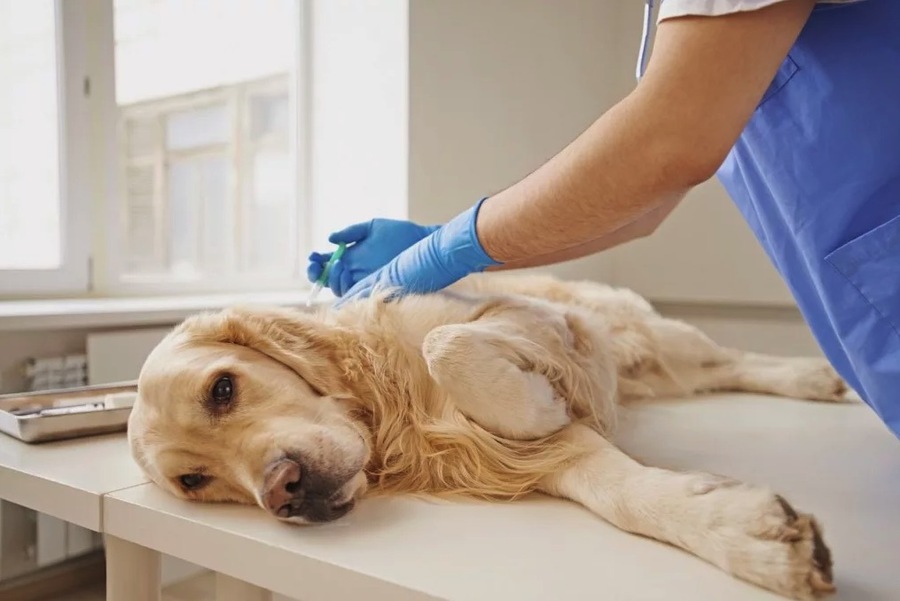
Understanding Chronic Kidney Disease in Senior Dogs
Chronic Kidney Disease (CKD), often referred to as kidney failure in dogs, is a progressive condition where the kidneys gradually lose their ability to function properly. This can significantly affect the overall health and quality of life of senior dogs, as the kidneys play a crucial role in filtering waste products from the blood, maintaining electrolyte balance, and regulating blood pressure.
How CKD Affects Senior Dogs
As dogs age, their organs, including the kidneys, may begin to deteriorate. In senior dogs, CKD is particularly concerning because it can lead to a buildup of toxins in the blood, causing a variety of health issues. The decline in kidney function affects their ability to eliminate waste products efficiently, which can result in severe complications if not managed properly.
Symptoms to Look Out For
Owners should be vigilant for symptoms indicating CKD in their senior dogs. Common signs include:
- Increased Thirst and Urination: One of the earliest and most noticeable signs.
- Loss of Appetite: Dogs may become picky eaters or refuse food altogether.
- Weight Loss: Gradual weight loss due to decreased appetite and muscle wasting.
- Vomiting and Diarrhea: Gastrointestinal distress is common as toxins build up.
- Lethargy and Weakness: Reduced energy levels and a lack of interest in activities.
- Bad Breath: Ammonia-like breath odor due to waste product accumulation.
- Poor Coat Quality: The coat may become dull and dry.

Prevalence of CKD in Senior Dogs
Chronic Kidney Disease is relatively common in senior dogs. It’s estimated that 1 in 10 dogs will develop some form of kidney disease in their lifetime, with the risk increasing as they age. This prevalence underscores the importance of regular veterinary check-ups, especially for older dogs, to catch any signs of kidney problems early.
Causes of CKD
Several factors can contribute to the development of CKD in senior dogs:
- Age: The primary risk factor, as kidney function naturally declines with age.
- Breed Predisposition: Some breeds are more prone to CKD, including Bull Terriers, Cairn Terriers, and German Shepherds.
- Genetics: Inherited conditions can predispose dogs to kidney disease.
- Chronic Infections: Recurrent kidney infections can cause long-term damage.
- Toxins and Medications: Exposure to certain toxins or prolonged use of specific medications can impair kidney function.
- Underlying Health Conditions: Diabetes, high blood pressure, and heart disease can contribute to kidney issues.
Treatment Process
While CKD is not curable, it can be managed to improve the dog’s quality of life and slow the progression of the disease. Treatment typically includes:
- Dietary Changes: A special diet low in protein, phosphorus, and sodium can help reduce the burden on the kidneys.
- Medications: To manage symptoms and complications such as high blood pressure or gastrointestinal issues.
- Fluid Therapy: Intravenous or subcutaneous fluids can help maintain hydration and support kidney function.
- Regular Monitoring: Frequent veterinary visits to monitor kidney function and adjust treatment as needed.
Dos and Don’ts for Dogs with CKD
Dos:
- Provide Fresh Water: Ensure your dog always has access to clean, fresh water.
- Follow Dietary Recommendations: Stick to the prescribed kidney-friendly diet.
- Administer Medications: Give all medications as directed by your veterinarian.
- Regular Vet Visits: Schedule and attend regular check-ups to monitor your dog’s condition.
Don’ts:
- Avoid High-Protein Treats: These can exacerbate kidney problems.
- Prevent Access to Toxins: Keep your dog away from harmful substances and medications not prescribed by a vet.
- Minimize Stress: Stress can worsen symptoms, so maintain a calm and stable environment.

Levels of CKD and Treatment Options
CKD is typically staged from I to IV based on severity:
- Stage I: Mild kidney dysfunction, often without obvious symptoms. Early dietary changes and monitoring can help.
- Stage II: Mild to moderate kidney damage with subtle symptoms. Dietary management and regular monitoring are crucial.
- Stage III: Moderate to severe damage with noticeable symptoms. More intensive treatment, including fluid therapy, may be necessary.
- Stage IV: Severe kidney failure with significant symptoms. Palliative care and supportive treatments are essential to maintain quality of life.
Conclusion
While CKD in dogs is not reversible, early detection and appropriate management can greatly improve the prognosis and quality of life for affected senior dogs. Regular veterinary care, attentive management of symptoms, and a supportive home environment are key to helping your dog live comfortably with this condition.

Soccer lover, loves to cook, guitarist. Specializes in administrative technology and is responsible for educating other employees on using progressive systems and applications.